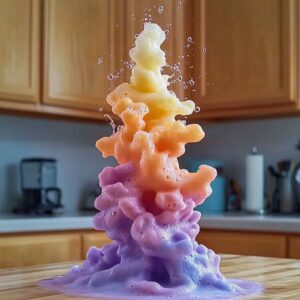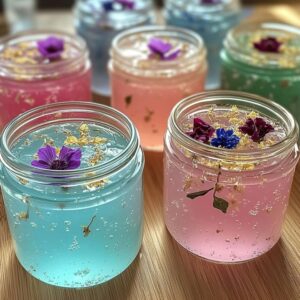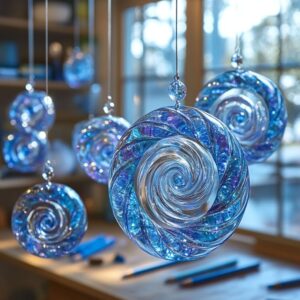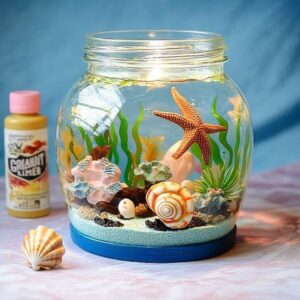Introduction
If you’re searching for an easy, affordable, and wildly entertaining sensory activity for kids, then this Bubble Foam Recipe is exactly what you need. Not only does it create a soft, fluffy, and vibrant foam that kids can’t resist playing with, but it’s also incredibly easy to make with household ingredients. Whether you’re a parent, teacher, or caregiver, bubble foam delivers a fun, mess-friendly experience that encourages creativity, sensory development, and hours of imaginative play.
Why You’ll Love This Recipe
From the very first scoop, this bubble foam will transform your playtime into a sensory wonderland. Because it’s made with just dish soap and water, you won’t need to hunt for specialty items. Additionally, the foam is completely customizable—tweak the colors, textures, and scents to suit every season, holiday, or learning theme. Furthermore, since the recipe is so quick and forgiving, you can whip up batch after batch for birthday parties, classroom activities, or quiet backyard afternoons.

Ingredients
Here’s everything you need to create soft, safe, and colorful bubble foam:
- 1/3 cup dish soap (preferably gentle and non-toxic)
- 2/3 cup warm water
- A few drops of food coloring (optional, for color)
- 1 tablespoon cornstarch or cream of tartar (optional, for thicker foam)
- A few drops of baby-safe essential oils (optional, for a calming scent)
- Eco glitter or biodegradable confetti (optional, for sparkle and texture)
Alt text suggestion: A mixing bowl filled with fluffy rainbow-colored bubble foam for kids.
Necessary Tools
To prepare this recipe, gather these basic tools:
- A mixing bowl (medium or large, depending on the batch size)
- An electric mixer (stand or handheld—either works great)
- Measuring cups
- Spatula or spoon (to scoop the foam)
- A sensory bin, tray, or shallow container (for playtime)
You might also want aprons or play clothes, since kids will dive right in!
Ingredient Swaps and Additions
To tailor the bubble foam to your needs, try these substitutions and enhancements:
- Sensitive skin? Use a hypoallergenic, fragrance-free dish soap.
- No food coloring? Try beet juice, turmeric, or spirulina for natural colors.
- Need a firmer foam? Add 1–2 teaspoons of xanthan gum or more cornstarch.
- Want sparkle? Choose biodegradable glitter or confetti that’s safe for children and the environment.
- Aromatherapy play? Add a couple of drops of baby-safe essential oils like lavender, chamomile, or sweet orange.
These adjustments not only allow for more control but also add new sensory layers to the activity.
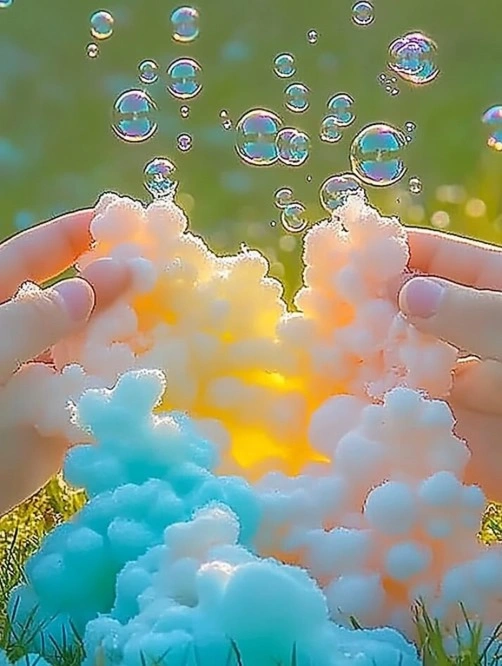
Step-by-Step Instructions
Creating bubble foam couldn’t be simpler. Here’s how to make a perfect batch every time:
- Combine soap and water. In a mixing bowl, pour 1/3 cup dish soap and 2/3 cup warm water.
- Add cornstarch (optional). For added texture, mix in 1 tablespoon of cornstarch or cream of tartar.
- Color it. Drop in a few drops of your chosen food coloring and stir gently.
- Whip it! Using a high-speed electric mixer, beat the mixture until stiff peaks form—about 3 to 5 minutes.
- Transfer. Spoon the foam into a sensory bin or tray.
- Play! Add toys, pour it, squish it, or mold it into playful shapes.
Pro tip: If the foam deflates over time, simply whip up a new batch!
Pro Tips for Success
- Use warm water—it helps the soap dissolve faster and whip better.
- Avoid overmixing, which can cause the foam to collapse.
- Use a wide bowl—it gives more surface area for faster whipping.
- Divide your batches—create different colors and scents in separate bowls.
- Test first. Always test essential oils or soap on a small skin patch for sensitivity.
- Store leftovers in the fridge, but note that re-whipping might be necessary before reuse.
Serving Suggestions
Since this recipe is about play, “serving” refers to the setup. Try these ideas:
- Theme bins: Create a beach theme with toy seashells or a jungle scene with animal figurines.
- Educational activities: Add alphabet letters, number blocks, or measuring cups to combine learning with fun.
- Outdoor party: Set up a large tub with bubble foam for communal play at birthday parties or playdates.
- Color-coded fun: Make batches of different colors and encourage mixing to explore new hues.
Alt text suggestion: A sensory bin filled with vibrant foam and toy dinosaurs peeking out.
Storing and Reheating
- Short-term storage: Store the bubble foam in a sealed container in the fridge for up to 2 days.
- Revive it: Before the next play session, use your mixer to whip it again for a fresh texture.
- Don’t freeze it: Freezing ruins the consistency and makes it unusable.
- Easy cleanup: Play outdoors or use a large tablecloth to catch spills.
Nutritional Information
Since this recipe isn’t for eating, here’s a quick safety snapshot instead:
- Non-toxic: Yes (when made with kid-safe dish soap and ingredients)
- Edible: No – not intended for consumption
- Skin-friendly: Generally safe; avoid if child has soap sensitivity
- Eco-friendly options: Yes – use biodegradable glitter and natural colors
FAQs
1. Can I use baby shampoo instead of dish soap?
Yes, baby shampoo can be a gentler alternative, especially for younger children or babies with sensitive skin.
2. How long does bubble foam last during play?
Typically 30–60 minutes, but that depends on humidity, temperature, and how vigorously it’s used. Re-whipping can refresh it.
3. Is it safe for toddlers and babies?
When using non-toxic soap and no small objects, yes—but supervision is essential. Always patch-test for skin sensitivity.
4. Can I use a manual whisk?
Technically yes, but it’s tiring and rarely achieves stiff peaks. An electric mixer is strongly recommended.
5. Will it stain clothes or surfaces?
Food coloring can stain lightly, so opt for washable coloring or dress kids in play clothes. Clean surfaces immediately after use.
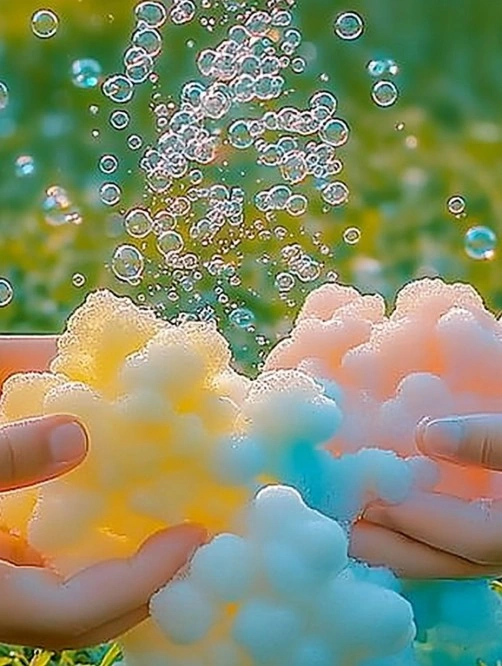
Conclusion
Whether you’re hosting a sensory play date or looking to spice up your afternoon activities, this bubble foam recipe is the perfect solution. It’s quick to make, endlessly customizable, and guaranteed to spark curiosity in young minds. With just a few ingredients and a little imagination, you’ll create a magical experience kids will remember. So grab your mixer, pick a color, and let the foam-filled fun begin!

